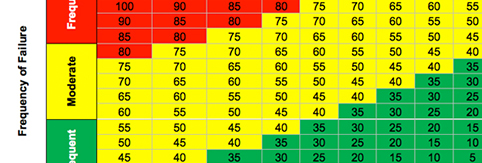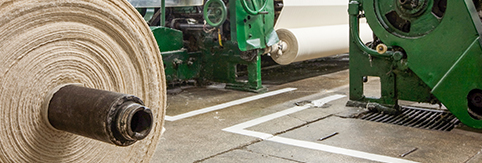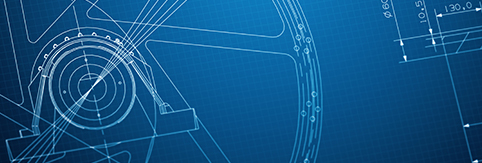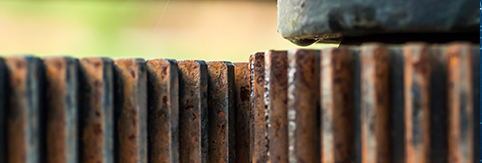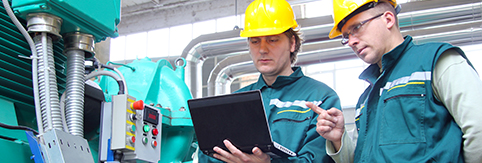Risk-Based Asset Management (RBAM®)
If your asset management strategy is not risk-based, you may be spending money on symptoms of problems instead of the root cause of your losses. For example, one company without a complete asset management strategy in place experienced a limiting factor that impacted production capacity by 25% (to the tune of $30 million), yet had no control plan in place to address the cause, nor the key performance indicators and analytics to even know the problem existed.
A risk-based asset management strategy couples risk management, standard work, and condition-based maintenance to properly apply resources based on process criticality. This ensures that proper controls are put in place and reliability analysis is used to ensure continuous improvement. An effective risk-based management system includes an enterprise asset management or resource solution that properly catalogs asset attribute data, a functional hierarchy, criticality analysis, risk and failure analysis, control plans, reliability analysis and continuous improvement.
Customized standard operating procedures, including mechanical integrity programs and risk-based inspections, are an additional layer of control for your program.
Risk-Based Asset Management Implementation Model
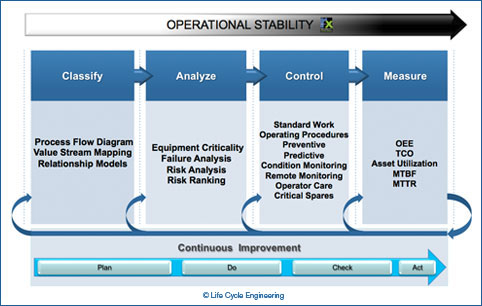
Using our Risk Based Asset Management Implementation Model, Life Cycle Engineering will partner with you to build a risk-based asset management system that will:
- Help you appropriately prioritize how you spend time, money and materials fixing the most critical problems
- Provide the infrastructure for continuous improvement
- Help you meet your corporate business objectives, including regulatory compliance
Asset Criticality Development
A complete asset criticality assessment that supports improving asset management and reliability.
Equipment Maintenance Plans and Job Plans
Maintenance and job plans for your equipment that help eliminate bad actor problems and improve asset availability.
Factory and Site Acceptance Testing
Development of factory and site acceptance tests to ensure assets comply with functional specifications and best practices.
Functional Specification Development
Functional specifications to ensure that design and manufacture of an asset meets engineering and manufacturing best practices.
Hierarchy Development
Development of a well-structured asset hierarchy that improves equipment performance and productivity.
Loss Elimination
Identifying waste and losses that are adversely affecting plant performance and recommendations for corrective actions.
Preventive Maintenance Optimization (PMO)
Optimization of your current Preventive Maintenance program to incorporate industry best practices and improve equipment performance.
Root Cause Failure Analysis (RCFA)
Performing Root Cause Failure Analysis to identify and resolve chronic and often complex problems.
Reliability Audit and Assessment
Assessment of your reliability program and maintenance activities to identify deficiencies that may adversely affect plant performance.
Reliability-Centered Maintenance Study
Evaluation of your RCM program and its ability to preserve system functionality of your critical assets.

